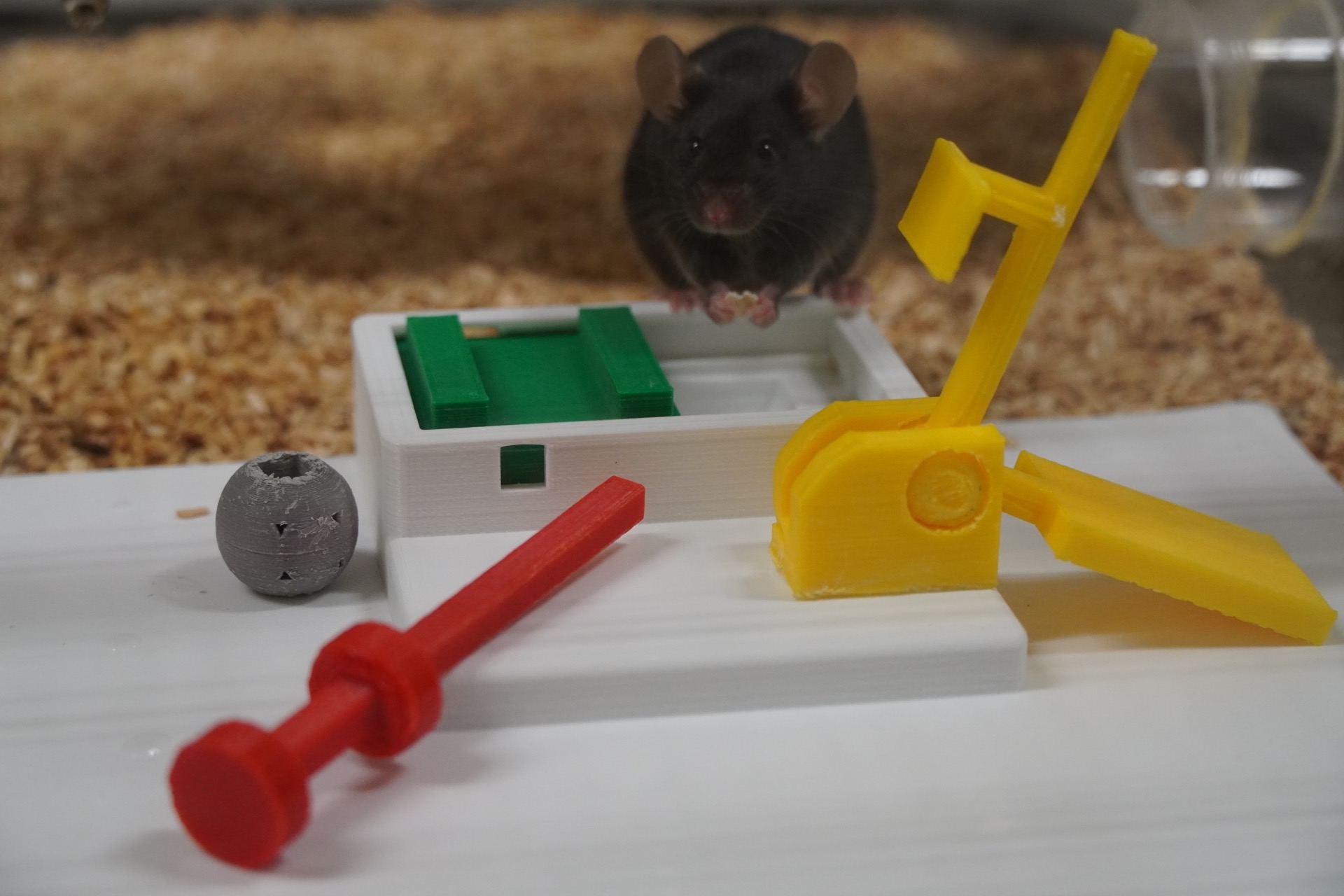Mouse lock box
Are mice considered intelligent according to SCIoI’s definition?

Photo by Katharina Hohlbaum
In this project, we aim to understand whether mice are considered intelligent for the purposes of SCIoI. We center our experiments around what we call behavior 1 (i.e., “Escaping from an escape room”). The basic experimental setup includes a home cage connected to an alley that leads to the test compartment. In the test compartment, so-called lockboxes are presented to the mice. A lockbox is a mechanical puzzle that is locked by different locking mechanisms of varying complexity, that requires a sequence of steps to be solved in a specific order. To motivate the animals to open these lockboxes, the puzzles are baited with a food reward (i.e. an oat flake). However, the mice can freely choose whether to engage with the lockboxes or not. To characterize and formalize the mouse behavior, we recorded the scene with cameras from three different perspectives. We developed a custom data analysis pipeline, consisting of automatically detecting the lockbox parts and mouse body parts in each camera, reconstructing the scene in 3D, and dynamically tracking the degrees of freedom of a skeletal mouse model. We find that mice get better at opening the lockbox over time and are currently in the process of identifying the underlying principles of the observed increase in performance.
Project Results
The team demonstrated that mice are able to solve 1-step- as well as 4-step-lockboxes, and their performance in solving the lockboxes improved over time. This was due to an increased capability of successfully manipulating the mechanisms and partially also due to the acquisition of a smart solution strategy. Lockboxes may hence be a promising approach to study both abstract sequential decision making and low-level motor learning in a single task that can be rapidly learned by mice. Mice that had access to lockboxes over a prolonged period of time showed less trait anxiety-related behavior and improved sequential problem-solving (i.e., solving novel lockboxes) when compared to mice that were not trained on lockboxes. However, the relevant phenotype of the mice was not affected by the lockboxes, i.e. no changes in state anxiety-related behavior and physiological variables (i.e., bodyweight, resting metabolic rate, stress hormone metabolite concentrations, adrenal gland weights) were found. Lockboxes did not negatively influence the relative variability of the variables analyzed. There was no evidence of toxicopathological effects associated with the material from which the lockboxes were made. The team also found that such mouse experiments and the large video dataset created can be automatically analyzed through modern machine learning methods. A newly developed pipeline consisting of tracking keypoints and subsequent detection of interactions with the mechanism proved successful and eliminated a huge amount of manual labor, but not all.




